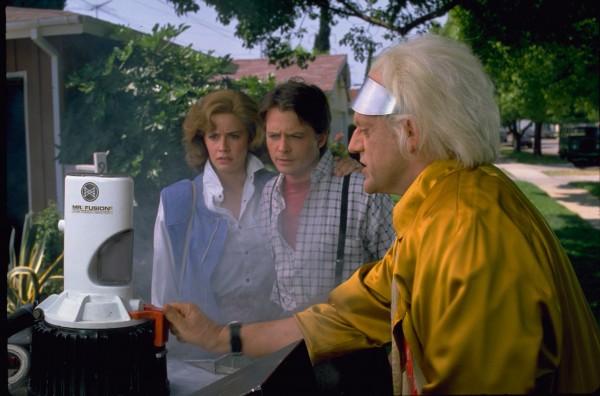synchro
Senior Member
- Location
- Chicago, IL
- Occupation
- EE
Getting back to the original question. Although ISO-phase at first sounds attractive with an underground installation, it has additional constraints and issues if you are paralleling conductors.
I.) The arrangement and spacing of conduits in a paralleled ISO-phase installation can significantly affect how well the currents are balanced between the conductors that are paralleled on each phase. That is because the mutual inductance between the conductors (from shared magnetic fields) affects the overall reactance on each phase. And the larger the conductors are, the more the reactance will dominate the resistance.
Currents in two parallel conductors that are in-phase with each other will experience an increased reactance, while out-of-phase currents will have a decreased reactance. That is because the mutual inductance is adding reactance in the first case, and subtracting it in the second case.
Just as an example, consider the following two ISO-phase arrangements of conduits laid out on a single plane, with each phase having its conductors split between two conduits (which will then be paralleled):
1. A A B B C C
2. A B C C B A
In the first arrangement, the first conduit (for phase A) only has one adjacent conduit, and the current in this adjacent conduit is in-phase with its own current. The second conduit for phase A also has an adjacent conduit for phase B, and the phase B current will have a component that is out-of-phase with the phase A current. This out-of-phase current will reduce the reactance experienced by the conductor in the second phase A conduit. As a result, the second conduit will have less reactance than the first and it will therefore conduct a larger share of the phase A current.
Similarly, the fifth conduit (phase C) will conduct more current than the sixth conduit (also on phase C).
The second arrangement has a mirror-image configuration. Because of this symmetry, the two conduits on each phase experience the same surrounding magnetic fields from the other conductors, and their conductors wils therefore have the same reactance. After paralleling, the different phases will have different reactances from each other, but it will not affect the current sharing between the parallel conductors.
Background:
https://www.google.com/books/editio...trefoil,+spacing&pg=PA188&printsec=frontcover
II.) A second limitation of paralleling with ISO-phase is that the number of conduits will need to be a multiple of 3 to accommodate the phases, plus the conduits for neutrals if used. But using complete sets having the conductors for all phases and neutral does not have this limitation, and so you can incrementally increase the number of conduits as needed.
Also, although complete sets are not immune from the effects of conduit spacing and arrangement on how well the currents on parallel conductors will balance, it will be less sensitive than will ISO-phase because of the closer spacing of the phase conductors within a set. And with the 90 and 45 degree bends that were mentioned, maintaining conduit spacing, etc. could be difficult.
I.) The arrangement and spacing of conduits in a paralleled ISO-phase installation can significantly affect how well the currents are balanced between the conductors that are paralleled on each phase. That is because the mutual inductance between the conductors (from shared magnetic fields) affects the overall reactance on each phase. And the larger the conductors are, the more the reactance will dominate the resistance.
Currents in two parallel conductors that are in-phase with each other will experience an increased reactance, while out-of-phase currents will have a decreased reactance. That is because the mutual inductance is adding reactance in the first case, and subtracting it in the second case.
Just as an example, consider the following two ISO-phase arrangements of conduits laid out on a single plane, with each phase having its conductors split between two conduits (which will then be paralleled):
1. A A B B C C
2. A B C C B A
In the first arrangement, the first conduit (for phase A) only has one adjacent conduit, and the current in this adjacent conduit is in-phase with its own current. The second conduit for phase A also has an adjacent conduit for phase B, and the phase B current will have a component that is out-of-phase with the phase A current. This out-of-phase current will reduce the reactance experienced by the conductor in the second phase A conduit. As a result, the second conduit will have less reactance than the first and it will therefore conduct a larger share of the phase A current.
Similarly, the fifth conduit (phase C) will conduct more current than the sixth conduit (also on phase C).
The second arrangement has a mirror-image configuration. Because of this symmetry, the two conduits on each phase experience the same surrounding magnetic fields from the other conductors, and their conductors wils therefore have the same reactance. After paralleling, the different phases will have different reactances from each other, but it will not affect the current sharing between the parallel conductors.
Background:
https://www.google.com/books/editio...trefoil,+spacing&pg=PA188&printsec=frontcover
II.) A second limitation of paralleling with ISO-phase is that the number of conduits will need to be a multiple of 3 to accommodate the phases, plus the conduits for neutrals if used. But using complete sets having the conductors for all phases and neutral does not have this limitation, and so you can incrementally increase the number of conduits as needed.
Also, although complete sets are not immune from the effects of conduit spacing and arrangement on how well the currents on parallel conductors will balance, it will be less sensitive than will ISO-phase because of the closer spacing of the phase conductors within a set. And with the 90 and 45 degree bends that were mentioned, maintaining conduit spacing, etc. could be difficult.

